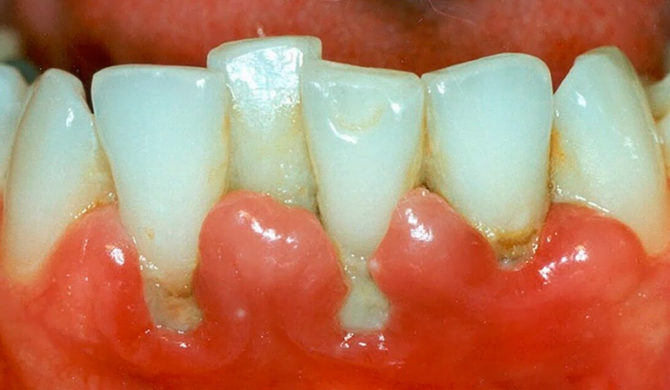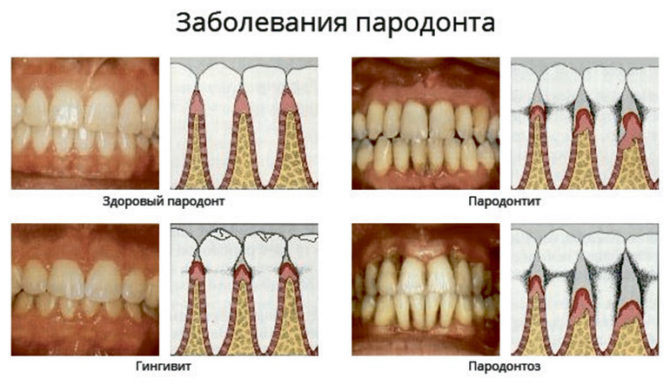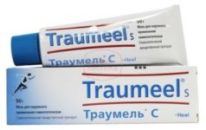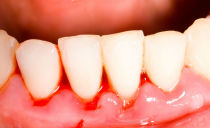What to do if the gum is inflamed: causes, symptoms and treatment
Gum disease is a common problem for people of all ages. This disease is not worth joking - it must be treated immediatelyotherwise it can lead to very disastrous consequences, as well as cause a number of other diseases.
Content
Causes of inflammation
Doctors still can not give a definite answer to the question of why gum inflammation near the tooth occurs. The cause of gum disease can lurk in both external and internal processes occurring in the human body.
External factors that provoke problems with teeth include:
- Inadequate care of the oral cavity.
- Neglect of the procedure for removing tartar and timely treatment of diseased teeth.
- Smoking, excessive drinking of alcohol, coffee, black tea.
- Mechanical damage to the gums (violation of the prosthetics or dental treatment, injections into the gums, improper use of dental floss or too hard a toothbrush, burns in the oral cavity).
- Teething wisdom.
The cause of gingival inflammation can also lurk in the following internal processes:
- The effect of drugs and other chemicals on the body.
- Immunodeficiency.
- Lack of vitamins and other beneficial substances in the body.
- Hormonal malfunctions (pregnancy, taking hormonal contraceptives).
- Hormonal diseases (diabetes).
- Problems with the digestive tract.
- Diseases of the cardiovascular system.
- Heredity.
- Infectious diseases.
Symptoms of the disease
The main symptoms of gum disease include the following:
- Redness of the gums - not only the gum near the diseased tooth can redden, but also tissues adjacent to adjacent teeth.
- Gum bleeding is the red color of saliva.
- Swelling.
- Itching
- Soreness when brushing.
- Bad breath.
- Elevated body temperature.
- Shakiness of the teeth.
- Formation of sores in the mouth.
Here are photos of diseased teeth that clearly illustrate inflamed gums:
Types of disease
Before treating gum disease, a good dentist must make the correct diagnosis. Establishing the cause of the inflammatory process in the future will affect the tactics of treatment and the choice of necessary drugs.
In dental practice, three types of disease are distinguished:
- gingivitis;
- periodontitis;
- periodontal disease.
Such a gradation of diseases was chosen for a reason. The fact is that gingivitis is the least dangerous, initial stage of inflammatory processes in the oral cavity. Periodontitis has an average level of danger. Periodontal disease is already the most complex, neglected form of the disease. When diagnosing gingivitis, it is necessary to be treated, but delay will not give such serious complications. But with periodontal disease, it is necessary to immediately take the most radical measures.
In the photo you can see what the inflamed gums look like with each of the diseases:
Crown problems
In the case when the gum near the tooth inflamed under the crown, do not try to fix this situation yourself. The most correct decision will be to contact a specialist, he will appoint her removal.
The fact is that inflammation of the gums under the crown as a result of improper installation or violation of the preliminary cleaning of the channels cannot be removed with any rinse or medicine. In this case, it would be more correct to do so - remove the crown from a diseased tooth, thoroughly clean everything under it and install it correctly.
Disease treatment
It is worth mentioning right away that only a doctor can prescribe an adequate, effective treatment of gums. So do not self-medicate in any case.
Traditional remedies
Traditional medicine has its own answer to the question of how to treat gum disease. For many years of development of dentistry, doctors have developed a certain tactic for treating gums:
- diagnose a disease;
- identify the reasons;
- sanitize the oral cavity;
- relieve inflammation;
- eliminate concomitant symptoms;
- treat the underlying disease.
Treatment regimen
Treatment of gum disease of any form and stage is carried out according to a certain scheme:
- Rinse the mouth.
- Use of a special anti-inflammatory gel or ointment.
- The use of injection therapy.
- Surgery (if necessary).
- Splinting of teeth (a similar procedure is not performed in all dental clinics).
Rinse
Rinsing your mouth during the treatment of gum disease is necessary in order to cleanse it of food debris and pathogenic bacteria that contribute to the development of infection. Such a procedure, although not able to cure the disease as a whole, however, it helps to relieve inflammation and redness.
Most often, doctors recommend rinsing your mouth at home with the following drugs:
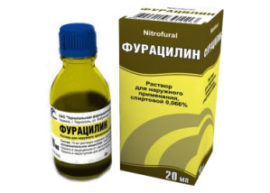 Furatsilin;
Furatsilin;- Chlorhexidine 0.05%;
- Maraslavin;
- Stomatophyte;
- Hydrogen peroxide solution;
- Miramistin 0.01%;
- Periodontal disease;
- Chlorophyllipt;
- Polyminerol;
- Tantum Verde.
In order to quickly and effectively eliminate inflammation of the gums around the tooth, you must follow one golden rule - it is recommended to rinse your mouth after each brushing (2-3 times a day) for at least a minute.
Gels and ointments
The use of special dental gels and ointments in the treatment of gum disease at home allows you to quickly remove pain, cure inflammation, prevent the spread of infection and change the red color of the gums to white.
Using this method involves applying applications to the gums. It is necessary to make such applications by rubbing the product around the tooth in order to further penetrate it into the periodontal pocket. The longer the drug will be in contact with the gum, the stronger the effect.
The most popular and proven dental gels and ointments include:
- Holisal;
- Solcoseryl;
- Malavit;
- Metrogil dent;
- Dental;
- Kamistad.
If everything is clear with preparations for an adult patient, then for many mothers the question remains how to remove gum inflammation in their babies. For such a specific category of patients, special means were created:
Toothpastes
The treatment of gum disease at home can not be imagined without the appointment of a special therapeutic toothpaste. Such pastes can relieve irritation, provide an accelerated tissue regeneration process and antibacterial protection. But using this type of paste is regularly strictly prohibited, because due to the constant antibacterial effect in the oral cavity, microflora is disturbed.
One course of application of medical paste should be no more than 21 days. After therapy, it is recommended to take a break for six months.
The most famous medicinal pastes are:
- Forest Balsam;
- Lacalut;
- Sensodent;
- Paradontax;
- President exclusive;
- Silka.
Analgesics
In addition to turning red and inflamed, the gums can also be unbearably sick. Sometimes even an adult is not able to cope with such pain on their own.You can quickly remove pain using the following analgesics:
- Paracetamol;
- Ibuprofen;
- Analgin;
- Ketanov;
- Tempalgin;
- Spasmalgon;
- Pentalgin;
- Solpadein.
In the case of the first two tablets, you can not particularly worry, but regarding the rest of the funds you need to be careful. They provide a fairly strong effect, but consume a lot of them and often prohibited.
Antibiotic therapy
Before treating gum disease at home with antibiotics, you should first try all of the above antiseptic agents. Only after the inflammation could not be removed with their help, can heavy artillery be used. Also, antibiotic therapy can be used at the initial stages of treatment when the course of the disease is too intense or its neglect is evident.
Most often, antibiotics in dentistry are usually prescribed such drugs:
- Sumamed;
- Metronidazole;
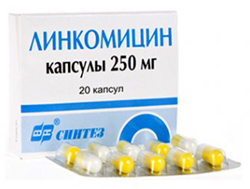 Lincomycin;
Lincomycin;- Augmentin;
- Azithromycin;
- Clindamycin;
- Levofloxacin;
- Nomicin;
- Ofloxacin;
- Tavridine;
- Syphlox.
Treatment with folk remedies
With a similar problem, traditional medicine can give an infinite amount of advice.
The most effective folk remedies with a quick effect are:
- Chamomile;
 Tincture of oak bark;
Tincture of oak bark;- Sage;
- Calendula;
- Echinacea
- St. John's wort;
- Ginger;
- Linden flowers;
- Birch buds;
- Leaves of wild strawberry;
- Air;
- Mint;
- Honey and propolis;
- Oregano;
- Soda and salt.
Very useful for gums chamomile. It is able to remove inflammation around the tooth and return it to white. Thanks to these properties, chamomile quite often is part of medicinal and conventional toothpastes.
Making infusion of chamomile or any other plant is not difficult. It is enough to pour a few tablespoons of grass into a glass of boiling water and let it boil a little. Further, the infusion is recommended to strain, cool and rinse their mouth.
Chamomile can not be boiled at all, but simply pour boiling water over its flowers - that is why they love it so much.
But the infusion of oak bark is made in a slightly different way - it is advisable to boil the bark in water for about half an hour, and then let it cool.
Rinse your mouth only with tinctures of room temperature 3-4 times a day. Keeping a mouthwash in your mouth is recommended for at least a minute. If you rinse your mouth with hot infusion, the gums can get sick even more and begin to whine. The fact is that bacteria love heat and with increasing temperature the process of their reproduction only intensifies.
If the gum is inflamed, and there are no medicinal herbs and plants at hand, ordinary soda and salt. It is recommended to rinse your mouth with their solution. Still some people prefer to brush their teeth with soda. The fact is that soda not only relieves inflammation near the tooth, but also allows you to remove the upper, contaminated layer accumulated on the teeth - the so-called plaque. As a result of the formation of plaque and stone, the gums can both become inflamed and hurt.
Prevention
People are most often interested in the problem of what to do if the gum is inflamed. But few people think about why she became inflamed, and what needs to be done to prevent this from happening at all. As you know, the best way to get rid of a disease is to prevent it:
- Regular, thorough brushing (at least twice a day).
- Brush replacement every three months.
- Refusal of bad habits (smoking, alcohol).
- Only a trusted dentist can install a crown.
- Timely removal of the upper, damaged layer of enamel (plaque, stones).
- Regular visits to the dentist for dental treatment.
- Full, proper nutrition.
- Enriching your daily diet with plenty of foods that contain vitamin C.
- The daily consumption of solid fruits and vegetables, allowing for additional toothbrushing.
- Use of dental floss.
Gum disease is not just an unpleasant phenomenon. With such symptoms, you must urgently consult a doctor. The fact is that from gum disease there can be inflammation throughout the body.


